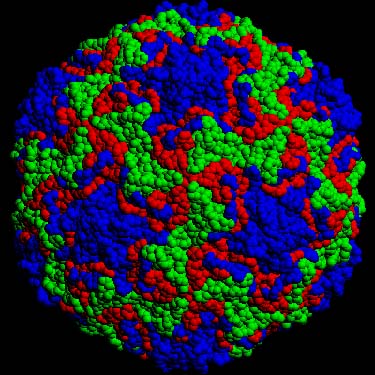 Submitted by LI - Executor on
Submitted by LI - Executor on

Body aches, coughing, sneezing, sore throat,fever – all symptoms of that specific agent of infectious known as the virus. In recent years, brand new viral strains have been developing quickly leaving health care professionals virtually clueless as how to help a plagued population.
Technically, Viruses are not really organisms. Viruses are incapable of growth or reproduction apart from other living cells since they have no prokaryotic genetic apparatus (meaning lacking a cell nucleus or other membrane bound organelles). The complete virus particle contains either DNA or RNA (ONLY) known as the genome. The virus particle is covered by a protein shell known as a capsid. Capsomers are groups of the Protein subunits that compose the outside of the capsid. The capsid together with its enclosed nucleic acid is called the nucleocapsid. The nucleocapsid may be enclosed in an envelope (phospholipid membrane) which may contain proteins of the host as well as of viral origin. The viron is the complete infective virus particle that can cause us trouble. Not all virus particles have envelopes. Viruses are usually not visible through a light microscope.

The first step in a viral infection is this binding to a host protein. Changes or damage to these binding sites (e.g. by disinfectants or drugs), or blocking these sites by antibodies can render virions noninfectious. This is why is it always advised to wash one’s hands, face, nose and ears when returning from out of doors and public places. After binding, the coat of enveloped viruses may fuse with the host cell membrane and release the virus into the host cytoplasm. Other viruses may enter the cell by a process of "endocytosis" which involves invagination of th Once inside the cell, uncoating occurs. The viral genome is released from its protective capsid to enable the nucleic acid to be transported within the cell and transcribed to form new virions. Nucleic acid replication produces new viral genomes for new virions. In general, DNA viruses replicate mainly in the nucleus and RNA viruses mainly in the cytoplasm, After the new viral genomes are created, Production and assembly of viral nucleocapsid proteins to enclose the new genomes takes place.
Release of new infectious virions is the final stage of replication. This may occur as the new viruses bud from the cell surface as occurs with many enveloped viruses or when the cell lysis, or bursts as with non-enveloped viruses.~ WKU Bio 113 - Microbiology
“People in general have forgotten to follow the rules of Nature … The environment, the weather, the changing of habits, intentions and thoughts contribute to body imbalance causing the immune system to become weaker and unable to stop the attack of the virus, or may make the body attract viruses.” ~ Li Hua L.Ac.TCMD
In the Autumn and Winter, supplement your diet with the following to boost your immunity –radishes, turnips, onions, curry, cucumbers, seaweed, pears, mushrooms and some Chinese “warm tea.” In the Spring and Summer supplement with lettuce, endive, tomatoes, cilantro, Swiss chard, garlic, ginger, strawberries, coconut milk and Chinese “cool tea.” You should avoid cold drinks at meals all the time. The Chinese believe that cold drinks interrupt nutrition absorption and can even increase the appetite leading to unwanted weight gain. They also believe that room temperature should be kept cool in the winter and moderate in the summer as this is thought to boost the body’s immune system by not causing stress to the body. In the Autumn and Winter the body needs more sleep and rest so go to sleep early and get up later (but not past 8:00 am). In the Spring and Summer go to bed later (not past midnight) and get up earlier. Try to get eight hours of sleep if possible.
- 1087 reads